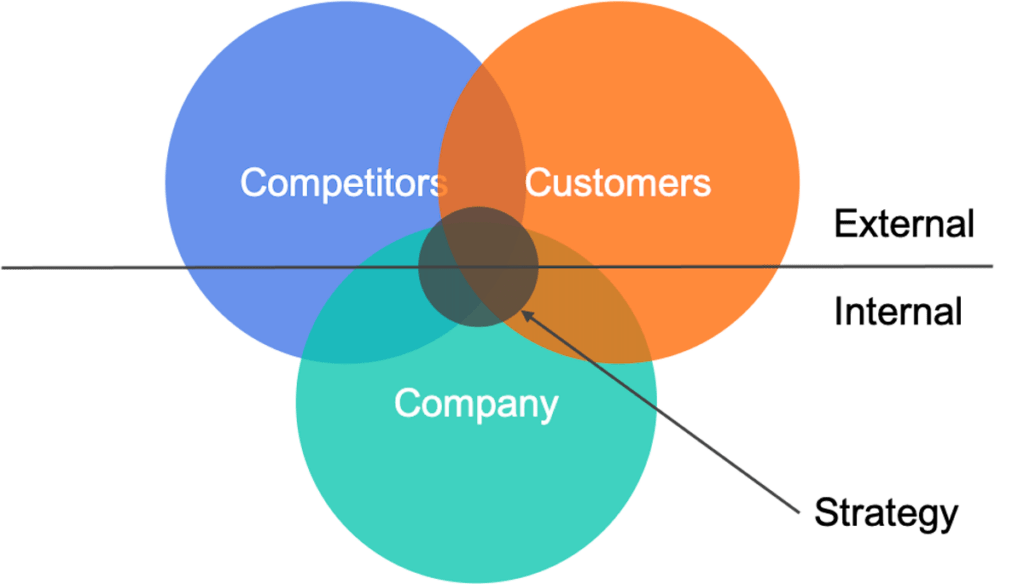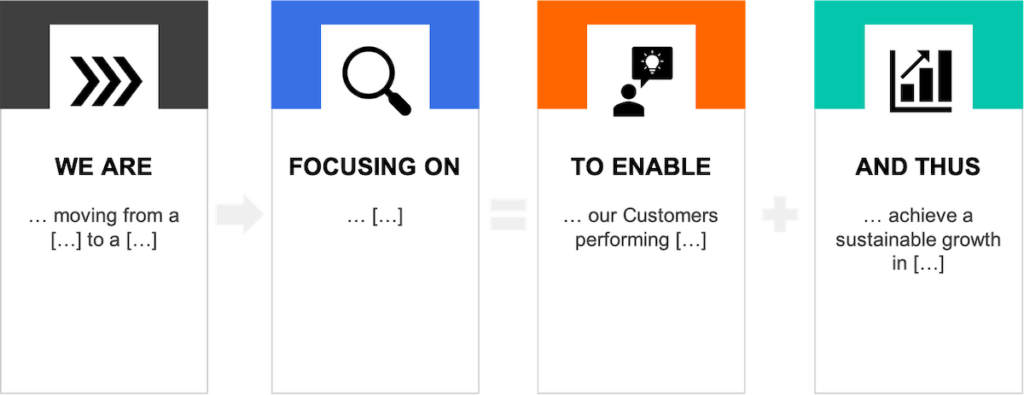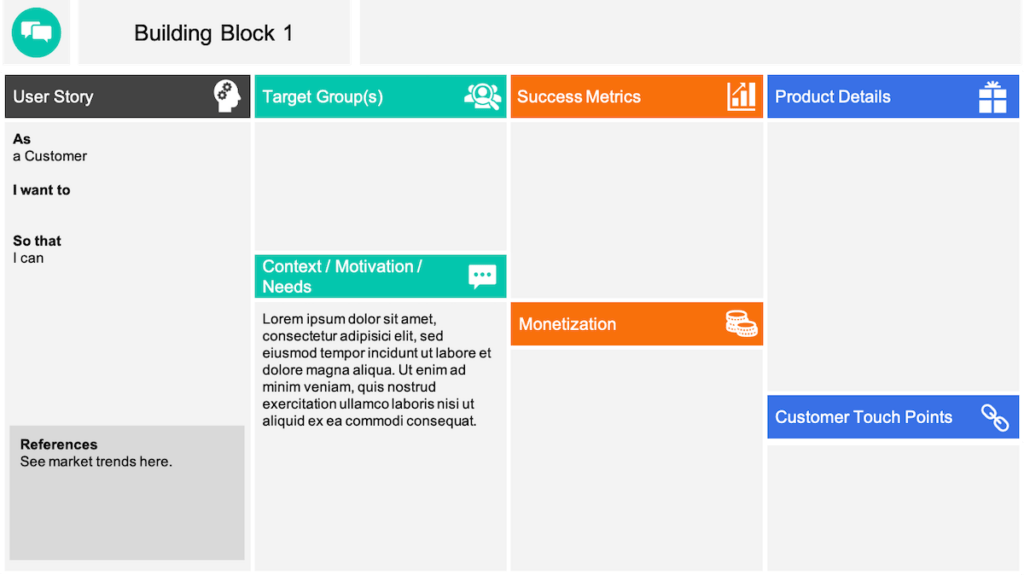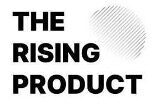TL;DR – Strategy isn’t just for the ivory tower
“Make a product strategy” sounds like one of those things you should be doing — but between sprint planning, stakeholder pings, and roadmap chaos, who has the time? Still, without a clear strategy, you’re just moving fast in random directions.
Creating a strong product strategy isn’t a luxury — it’s a leadership necessity. This post gives you a practical 7-step plan to make it happen:
- Make space in your schedule (or your team’s) — strategy needs focus, not multitasking.
- Clarify context by connecting product work to company goals and market realities.
- Analyze your position using the 3Cs (Company, Competitors, Customers).
- Craft your strategic claim — a concise statement of where your product is headed and why.
- Define building blocks that guide roadmap priorities over the next 3–5 years.
- Test early — share draft versions for feedback before it’s “final.”
- Keep it alive — align your actions with strategy and review it quarterly.
This is more than a slide deck. It’s how you give your product — and team — clear direction. Strategy isn’t a task. It’s your job.
What’s the deal with Product Strategy then?
If we consider the key qualifications of a Senior or Lead Product Manager, terms like conceptual strength and strategic thinking come to mind. Indeed, in addition to skills such as excellent stakeholder management and a profound understanding of the domain and market, strategy development is an essential tool in the product manager’s toolkit.
Before embarking on the journey towards a strong product strategy, some preparation is required. The primary question you need to address is understanding the distinction between vision, mission, and strategy. This is where most players falter. To quote one of my favorite authors, Richard P. Rumelt:
[…] For example, if your football coach advises your team to win the next game, he isn’t providing you with any useful information unless he tells you how to win. In other words, he must provide a plan of action – a strategy.
Good Strategy / Bad Strategy: The difference and why it matters.
Wikipedia.org provides a detailed overview of the topic of Vision, Mission, and Strategy, along with additional literature references:
[…] From the mission, long-term corporate objectives are derived, which are more operationalizable than the mission itself. They define the performance standards by which to assess. In this sense, the mission serves as the guiding metric for corporate strategy.
H. Hungenberg: Strategisches Management in Unternehmen, Ziele – Prozesse – Verfahren.
Strategy should aim to be operationalisable. This bridges the gap between the vision and mission of the company or business unit on one side and the specific tasks needed to achieve them on the other. And the product manager? Through their strategic efforts, they consequently deliver significant value – perhaps even their greatest – to the team.
Product Strategy – The 7 steps
There are numerous ways to develop a Product Strategy. The steps outlined here are just one approach. Over time, each product manager develops their own style that suits them, as well as the subject, scope, and organisation.
1. Create space for yourself
One cannot develop strategies casually, which was a mistake I made in my initial attempts. The journey was rather unsatisfactory, as both the extended duration required and the constant stress levels bothered me. This stemmed from my failure at the outset to consider and demand the essential space needed for developing strategies.
The daily tasks of a product manager are already time-consuming and often involve too many context switches. Adding the creation of a Product Strategy to the mix impacts both equally. However, there are ways to avoid this:
- Delegation:
If you lead a team of product managers, delegate the strategy work — but set a clear framework (key questions, process, timeline) and ensure the necessary freedom to explore. Depending on team maturity, allow time for sparring and coaching. If you don’t lead PMs yourself, delegate operational tasks (like sprint planning or ticket creation) to the (tech) team during the strategy phase. - Outsourcing:
No, this doesn’t mean outsourcing the entire strategy. That should always come from within the organization. But it can make sense to bring in external support for specific tasks — such as: 1. Desk research on market, trends, or competitors; 2. Building method skills, if lacking internally; 3. Facilitating workshops to focus on content; 4. Creating presentations to clearly communicate results. - Postponing:
Sometimes, it may be necessary to delay strategy work to avoid falling into the traps mentioned earlier. But this should be the exception. Every delay increases the impact of lacking a clear strategy. That said, quieter periods — like summer or year-end — can be a smart time to focus on it.
As a guideline, aim to have the initial version of the strategy developed within six to twelve weeks. If this timeframe is exceeded, it indicates that you may not have created the required space for progress. Otherwise, the strategy development may risk turning into a gruelling marathon.
2. Create a context
In my article Leading by Intent, I highlighted the significance of context and its communication. Every action undertaken by us as product managers should align with the company’s objectives. In other words, the activities of a product team must stem from the overarching business goals.
So far so good, but where do I begin? As always, it depends. Firstly, on the size of the company and product portfolio. Secondly, on the organizational structure. If you define the scope too broadly, there’s a risk that the Product Strategy won’t be tangible. Using Google as an example, the question may arise whether an overarching strategy or one specific to individual product areas like Google Maps or Google Analytics delivers greater value.
If you opt for pursuing individual strategies, it is advisable to establish a vision, mission, and a clear set of principles (Product Principles) at the highest level. The Product Principles encompass thinking and working methods, aiming to provide a framework for a unified perspective on the overall product.

A common way of organizing businesses involves dividing them into units that can differentiate themselves based on revenue channels and/or target groups, such as buyers and sellers. One of the key responsibilities of these Business Units (BU) is to create a long-term outlook for the business sector through a vision, mission, and strategy.
The expansion into new target audiences and markets or the introduction of different pricing structures are some examples of the latter. A business area’s North Star, if specific enough, can serve as an excellent starting point for the strategic development of involved functions such as marketing, sales, or product.
3. Take a look at your current position
A strategy outlines the path to an objective. In addition to raw data presented as metrics, it’s necessary to contextualize our product to gain a better understanding of our current position and the direction we need to take. Right, but what exactly should we contextualize it with? This is where Kenichi Ohmae’s 3Cs Model (from ‘The Mind Of The Strategist: The Art of Japanese Business‘) comes in. Through this model, we examine the three elements: 1. Company, 2. Competitors, and 3. Customers, in relation to our product.

Company:
Begin by thoroughly engaging with the relevant business strategy applicable to your company. Analyze and summarize where the product can or must contribute to achieving the goals. This may involve new pricing models, target audiences, or markets as described earlier, which will significantly influence your future product.
Customers:
Should our product provide significant value to users, it will positively impact business success. Understanding what creates high value involves grasping the needs of our target audience(s). The most structured approach is analysing the Customer/User Journey based on Gains & Pains or Jobs to Be Done. If you conduct regular user research, this part will be straightforward. If not, it is crucial to catch up on this aspect promptly.
Competitors:
We need to stay alert to two key aspects. First, keeping up with trends is essential in the fast-moving tech world — knowing which technologies or applications could affect our offering is crucial. Second, we must closely monitor competitors, including not just direct rivals but also potential future players. Facebook is a good example: once seen purely as a social platform, its marketplace has become a serious threat to established trading platforms.
4. Look for your destination
Phew, we’ve completed the first part. Now, it’s time to focus on the actual product strategy. Before diving into the specifics, take a step back and summarize mentally what conclusions you draw for the product from the analysis. In other words, what is the general direction and what would be the so-called Elevator Pitch for it? This is crucial as a Claim will consistently bring you back to the core of your strategy.
Stakeholder interviews have been a valuable method in my experience. Stakeholders may include representatives from various functions or management. Through these interviews, you gain structured insights into different perspectives on the product and market. This can be a significant source of inspiration and aid in anticipating future questions and feedback on the strategy more effectively.

In this type of claim, the primary focus is always on what we aim to achieve with our strategy (referred to as Impact). It is advisable to establish a North Star Metric in this context. This metric can assist in deriving more specific product metrics and, most importantly, in evaluating the progress made on your strategic journey. Further details on the North Star Framework can be found at amplitude.com.
The North Star Framework is a model for managing products by identifying a single, crucial metric (the North Star Metric) that, according to Sean Ellis “best captures the core value that your product delivers to [its] customers.”
The North Star Playbook (by Amplitude)
5. Look into how you can get there
Next, you will develop the pillars (also known as Building Blocks) of your strategy. It’s crucial to maintain the right level of detail. Building Blocks outline the areas in which you will advance your product. They form the foundation from which teams derive their specific initiatives and roadmaps. A Product Strategy designed for the next three to five years should not include more than seven to eight of these Building Blocks. Otherwise, you risk delving into project or even feature-level details too soon.
An instance involves dealing with native apps. This could involve determining whether to pursue a purely native approach, aim for a complete coverage of all functions in the apps, or develop apps only for selected use cases. This establishes crucial guidelines and conditions for the teams to align their planning in terms of priorities, budget, and skills.

Consider using a canvas to describe each pillar (refer to Image 5). Collaborate with the teams in a suitable workshop format to develop the content. This ensures a shared understanding and links the team level with the strategy. Note: The Product Details section should not be viewed as a backlog but as an initial collection of ideas to make the topics more tangible.
At the end, you will either arrange the Building Blocks in a chronological order or define their respective priorities. In a format with a chronological order (strategic Product Roadmap), ensure it is not perceived as a commitment. It is simply a proposal based on the information available during the strategy development phase. Thus, dividing the Roadmap into quarters or even months is not logical.
6. Fail early
Are we done now? No. We’re just getting started! The strategy needs to be deeply ingrained and, most importantly, must withstand the scrutinizing eyes of stakeholders and teams. This also means seeking feedback as early as possible to ensure you’re on the right track (aka fail fast). The earliest point is within five minutes. What? Yes. Once you have a rough structure for the framework and methodology, I recommend seeking feedback right away.
Following this, you should create a specific plan on which maturity level of the Product Strategy you discuss with whom. You also need to decide whether to present the interim results to a larger or smaller group. Typically, it is advisable to keep the group smaller in the initial meetings and then broaden it towards the end. The latter can take place during All Hands, Brown Bag Sessions, or at the regular meetings of the management team.
7. Keep It Going
The drawer is the worst place for a strategy. A strategy is dynamic and may evolve over time, so staying engaged is crucial. It’s essential to align everything you do with the Product Strategy. This way, you remind yourself and, more importantly, the teams of the key points consistently.
Furthermore, it is essential to regularly assess the relevance, currency, and goal achievement of the content, ideally on a quarterly basis. The world is constantly evolving, and it is entirely normal for the competitive landscape, customer needs, or the company’s strategic guidelines to change.
What experiences have you had with strategy development? Feel free to leave a comment on the blog or reach out to me directly.
Book recommendation
Click, buy, and enrich me – my literature recommendation on the subject and an enlightening read on strategy: Good Strategy/Bad Strategy: The difference and why it matters (Richard Rumelt)

Hero Image: Tango steps in Buenos Aires (Argentina) by Martin Heckmann


Super Überblick! Ich kann nur noch mal unterstreichen, wie wichtig es ist, sich gleich am Anfang über die Stakeholder und deren Einbindung Gedanken zu machen: Wen involvieren? Wen informieren? Wen im Hinterkopf behalten? Strategie = Politik…
[…] to most that the order of processing should be derived from the company’s goals (refer to 7 Steps to a Great Product Strategy). This information should be communicated more strongly by senior management to prevent silo […]
[…] time, such setups lead to hidden costs: code quality suffers, coordination overhead increases, and product strategy gets […]